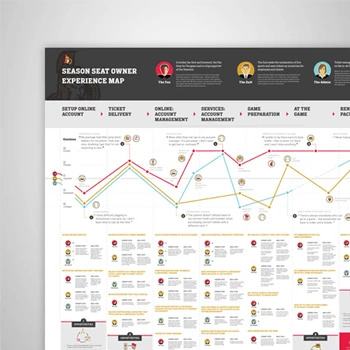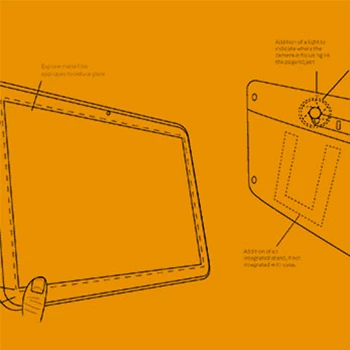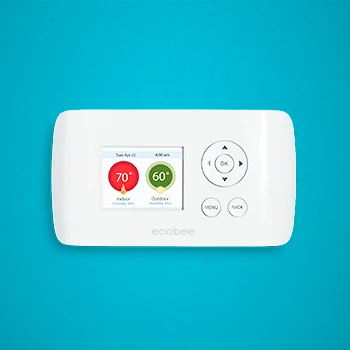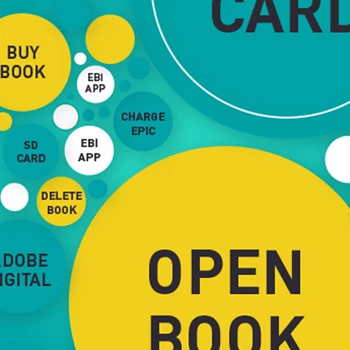What is UX staffing augmentation and how does it work?
UX staffing augmentation adds skilled UX professionals to your existing team for specific projects or timeframes. Our experts integrate seamlessly with your internal processes while bringing specialized skills in research, design, strategy, and testing. This approach gives you access to senior talent without the long-term commitment of permanent hires.
Tip: Start with a smaller engagement to assess cultural fit and working style before scaling up your augmentation needs.
How does augmentation differ from hiring full-time UX staff?
Augmentation provides immediate access to experienced professionals who can contribute from day one, whereas hiring requires recruiting, onboarding, and ramp-up time. Our augmentation model offers flexibility to scale resources up or down based on project demands while accessing diverse skill sets that might be difficult to find in a single hire.
Tip: Use augmentation for specialized skills or peak workloads, then transition successful collaborations to permanent roles if long-term needs emerge.
What types of UX professionals can you provide through augmentation?
We provide UX researchers, designers, service designers, content strategists, design operations specialists, and fractional UX leadership. Each professional brings specialized expertise in areas like usability testing, information architecture, journey mapping, prototyping, and Experience Thinking methodology across brand, content, product, and service touchpoints.
Tip: Match the augmentation role to your specific project phase - researchers for discovery, designers for solution development, and design ops for scaling initiatives.
How quickly can augmented UX professionals start contributing?
Our professionals typically begin contributing meaningful work within the first week. They come equipped with proven methodologies, established workflows, and experience across multiple industries. We provide a brief orientation period to understand your specific context, brand guidelines, and project requirements before full integration.
Tip: Prepare project briefs, access credentials, and stakeholder introductions in advance to maximize the value of their first week.
What's the minimum engagement period for UX staffing augmentation?
While we can accommodate shorter engagements for specific needs, most effective augmentation projects span 3-6 months. This timeframe allows professionals to understand your context deeply, contribute meaningfully to outcomes, and transfer knowledge effectively to your internal team.
Tip: Plan for a minimum 3-month engagement to see substantial progress on complex UX initiatives and allow time for proper knowledge transfer.
How do you ensure augmented staff understand our industry and users?
Our professionals bring cross-industry experience from technology, energy, media, healthcare, and financial services. We conduct thorough project briefings, user research reviews, and stakeholder interviews to understand your specific market context. This foundation, combined with user-centered research methodologies, ensures relevant and impactful contributions.
Tip: Share existing user research, personas, and journey maps during onboarding to accelerate domain knowledge acquisition.
What role does Experience Thinking play in your augmentation approach?
Experience Thinking is our foundational framework that examines how users interact with your brand, content, products, and services as connected experiences. Augmented professionals apply this holistic approach to ensure their work integrates seamlessly across all customer touchpoints rather than creating isolated improvements in single areas.
Tip: Discuss how your current initiatives map to the four Experience Thinking quadrants to identify the most impactful augmentation focus areas.
How do augmented professionals integrate with our existing UX team?
Our professionals adapt to your established workflows, tools, and communication styles while bringing fresh perspectives and proven methodologies. They participate in all team activities - standups, design reviews, research sessions - as collaborative team members rather than external consultants.
Tip: Include augmented staff in team rituals and informal gatherings to build relationships that enhance collaboration and knowledge sharing.
What happens if our internal team lacks UX experience?
Our augmented professionals excel at knowledge transfer and mentoring. They can establish UX practices, create documentation, and train your team on methodologies while delivering project outcomes. This dual approach builds internal capabilities while ensuring immediate project success.
Tip: Identify a dedicated internal point person who can shadow the augmented professional to accelerate your team's UX learning curve.
How do you handle different working styles and methodologies?
We begin each engagement by understanding your current processes, tools, and team dynamics. Our professionals adapt their working style while introducing proven methodologies that can enhance your existing approach. This creates a collaborative environment where both parties learn and improve.
Tip: Be open about your team's preferred working styles during initial discussions to ensure the best personality and methodology fit.
What tools and platforms do augmented professionals use?
Our professionals are proficient in industry-standard tools including Figma, Sketch, Adobe Creative Suite, Miro, UserTesting, Optimal Workshop, and various prototyping platforms. They can adapt to your existing tool stack or recommend improvements based on project needs and team capabilities.
Tip: Audit your current tool licenses and capabilities before engagement to identify any gaps that might require additional software or training.
How do you manage communication across different time zones?
We establish clear communication protocols including regular check-ins, shared documentation, and asynchronous work practices. Our professionals are experienced in remote collaboration and can adapt their schedules to overlap with your core business hours while maintaining productivity.
Tip: Establish core overlap hours for real-time collaboration while allowing flexible schedules for individual work to maximize global talent access.
What oversight and reporting do you provide during engagements?
We provide regular progress reports, milestone deliverables, and maintain open communication channels. Our professionals participate in your existing reporting structures while providing additional insights on UX metrics, user feedback, and recommendations for continuous improvement.
Tip: Establish clear success metrics and reporting cadences upfront to ensure alignment on progress and outcomes throughout the engagement.
How do you ensure knowledge transfer when augmentation ends?
Knowledge transfer is built into every engagement through documentation, training sessions, and gradual responsibility handover. We create detailed process guides, design systems documentation, and research repositories that enable your team to continue the work independently.
Tip: Plan knowledge transfer activities throughout the engagement rather than waiting until the end to ensure smooth transitions and retained learning.
What research methodologies do your augmented UX researchers use?
Our researchers apply both qualitative and quantitative methods including user interviews, usability testing, card sorting, journey mapping, ethnographic studies, surveys, and analytics analysis. They select methodologies based on your research questions, timeline, and available resources while ensuring actionable insights.
Tip: Define your key research questions and success metrics before engagement to help researchers recommend the most effective methodology mix.
How do augmented researchers handle participant recruitment?
Our researchers can manage end-to-end recruitment using established panels, your customer database, or specialized recruitment services. They handle screening, scheduling, and logistics while ensuring diverse, representative participant groups that align with your target user personas.
Tip: Share existing customer segments and personas to help researchers identify recruitment criteria that will yield the most valuable insights.
What deliverables can we expect from UX research augmentation?
Research deliverables include detailed findings reports, user personas, journey maps, usability assessment reports, and strategic recommendations. All deliverables include actionable insights with prioritized recommendations that connect directly to business objectives and design decisions.
Tip: Specify your preferred deliverable formats and level of detail upfront to ensure research outputs match your team's needs and presentation requirements.
How do researchers validate findings with stakeholders?
Our researchers facilitate stakeholder workshops, present findings through interactive sessions, and create compelling narratives that connect user insights to business impact. They excel at translating research findings into language that resonates with different organizational levels and functions.
Tip: Identify key stakeholders early and understand their specific interests to help researchers tailor presentations that drive action and buy-in.
Can augmented researchers work with sensitive or confidential data?
Our professionals sign comprehensive confidentiality agreements and follow strict data security protocols. They can work with sensitive user data, proprietary business information, and regulated industry requirements while maintaining the highest standards of data protection and privacy.
Tip: Discuss data security requirements and compliance needs during initial conversations to ensure proper protocols are established before project kickoff.
How do researchers ensure unbiased insights and recommendations?
Our researchers apply rigorous methodological standards, triangulate findings across multiple data sources, and maintain objectivity through structured analysis frameworks. They're trained to identify and mitigate cognitive biases that can influence research interpretation and recommendations.
Tip: Encourage researchers to challenge assumptions and present alternative interpretations to ensure robust, unbiased insights that drive better decisions.
What design specializations do your augmented designers bring?
Our designers specialize in interaction design, visual design, service design, information architecture, and design systems. They apply Experience Thinking principles to create cohesive designs across digital products, physical touchpoints, and service interactions that align with your brand experience.
Tip: Match designer specializations to your project phase - information architects for complex content, service designers for end-to-end experiences, and visual designers for polished interfaces.
How do designers balance creativity with business constraints?
Our designers excel at creative problem-solving within real-world constraints including budget, timeline, and technical limitations. They use systematic design thinking approaches to explore multiple solutions before converging on designs that optimize both user value and business feasibility.
Tip: Share all known constraints upfront, including technical limitations and stakeholder preferences, to help designers focus creative energy on viable solutions.
What's the design process for augmented team members?
Our designers follow user-centered design processes that begin with understanding user needs, ideating multiple solutions, prototyping concepts, and iterating based on feedback. They integrate seamlessly with agile development cycles while maintaining design quality and user advocacy.
Tip: Align design milestones with your development sprints to ensure smooth handoffs and reduce potential friction between design and development teams.
How do designers collaborate with development teams?
Our designers create detailed specifications, maintain design systems, and participate actively in development sprints. They provide ongoing design support during implementation, conduct design reviews, and ensure the final product matches intended user experiences.
Tip: Include designers in development planning sessions to identify potential implementation challenges early and develop solutions that maintain design integrity.
Can augmented designers help establish design systems?
Our designers have extensive experience creating and maintaining design systems that scale across multiple products and teams. They can audit existing design patterns, establish consistent component libraries, and create governance processes that ensure long-term system sustainability.
Tip: Start with a design audit to understand your current design debt before investing in new design system components and patterns.
How do designers ensure accessibility in their work?
Our designers integrate accessibility considerations throughout the design process, following WCAG guidelines and testing with assistive technologies. They create inclusive designs that work for users with diverse abilities while maintaining aesthetic and functional quality.
Tip: Establish accessibility requirements and testing protocols early in the project to avoid costly retrofitting and ensure inclusive experiences from launch.
What role do designers play in user testing and validation?
Our designers actively participate in user testing sessions, observing user interactions and iterating designs based on feedback. They create testable prototypes, analyze usability findings, and rapidly implement improvements to optimize user experiences before development.
Tip: Plan regular testing cycles throughout the design process rather than waiting for final designs to validate concepts and reduce revision cycles.
How do you measure the success of UX staffing augmentation?
We measure success through user experience metrics, project delivery outcomes, team capability improvement, and business impact indicators. This includes usability scores, task completion rates, user satisfaction, time-to-market improvements, and internal team UX knowledge advancement.
Tip: Establish baseline metrics before augmentation begins to demonstrate clear improvements and return on investment throughout the engagement.
What business outcomes can we expect from UX augmentation?
Organizations typically see improved user satisfaction scores, reduced support costs, increased conversion rates, faster time-to-market, and enhanced team capabilities. The specific outcomes depend on your current UX maturity level and the focus areas of the augmentation engagement.
Tip: Align UX metrics with existing business KPIs to demonstrate clear connections between user experience improvements and business value.
How does augmentation help build internal UX capabilities?
Our professionals mentor your team, establish UX processes, create documentation, and transfer knowledge through hands-on collaboration. This builds lasting internal capabilities that continue generating value long after the augmentation engagement ends.
Tip: Dedicate specific team members to work closely with augmented professionals to maximize knowledge transfer and capability building opportunities.
Can augmentation help us establish UX leadership and strategy?
Our fractional UX leadership provides strategic direction, establishes UX processes, and builds organizational buy-in for user-centered design. This leadership approach helps organizations move from tactical UX activities to strategic UX transformation that drives business results.
Tip: Start with fractional leadership to establish UX vision and processes before adding individual contributor augmentation for maximum strategic impact.
How do you ensure augmentation aligns with our long-term UX strategy?
We begin each engagement by understanding your long-term UX vision and organizational goals. Our professionals contribute to immediate project needs while building toward your strategic objectives through process establishment, team development, and capability building initiatives.
Tip: Share your UX roadmap and organizational goals to help augmented professionals make decisions that support both immediate needs and long-term strategy.
What happens to UX initiatives when augmentation ends?
We ensure sustainable UX practices through knowledge transfer, documentation, and gradual responsibility transition to your internal team. Many organizations continue initiatives independently or transition successful augmented professionals to permanent roles based on proven performance and cultural fit.
Tip: Plan for sustainability from the beginning by having internal team members shadow augmented professionals and gradually take on responsibilities.
How do you help organizations scale UX practices across multiple products?
Our Experience Thinking framework provides a systematic approach to scaling UX across products and touchpoints. We help establish design systems, research processes, and governance structures that enable consistent user experiences while allowing for product-specific customization.
Tip: Start with a pilot product to establish UX processes and demonstrate value before scaling practices across your entire product portfolio.
How do you handle cultural fit between augmented staff and our team?
We conduct thorough discussions about your team culture, working styles, and values before matching professionals to your engagement. Our extensive experience working with diverse organizations helps us identify candidates who will thrive in your specific environment while contributing fresh perspectives.
Tip: Include cultural fit discussions and perhaps informal conversations during the matching process to ensure personality and working style alignment.
What if an augmented professional isn't meeting expectations?
We maintain regular check-ins and open communication channels to identify and address any performance or fit issues early. If necessary, we can adjust roles, provide additional support, or replace team members to ensure your project success and team satisfaction.
Tip: Address concerns early through direct communication rather than waiting for formal review periods to resolve any performance or collaboration issues.
How do you manage intellectual property and confidentiality?
All augmented professionals sign comprehensive confidentiality and intellectual property agreements that protect your proprietary information and ensure any work created during the engagement belongs to your organization. We maintain strict protocols for data security and information handling.
Tip: Review IP and confidentiality requirements during initial discussions to ensure all legal protections are properly established before project kickoff.
Can we transition successful augmented professionals to permanent roles?
Many of our successful augmentation engagements result in permanent hiring opportunities. We're supportive of these transitions when they benefit both the professional and your organization, and we can help facilitate the conversion process smoothly.
Tip: Discuss transition possibilities upfront to set clear expectations and ensure all parties understand the potential for permanent opportunities.
How do you handle competing priorities and resource conflicts?
We establish clear role definitions, communication protocols, and escalation procedures at the beginning of each engagement. Our professionals are experienced in navigating organizational dynamics and can work effectively within complex stakeholder environments.
Tip: Map out key stakeholders and decision-making processes early to help augmented professionals understand how to navigate your organizational structure effectively.
What training or onboarding do you provide for augmented staff?
Our professionals receive orientation on your organization, project context, and specific requirements before beginning work. We also provide ongoing support, coaching, and additional training as needed to ensure optimal performance and value delivery.
Tip: Prepare comprehensive onboarding materials including brand guidelines, user research, and project documentation to accelerate the professional's contribution timeline.
How do you ensure consistent quality across different augmented professionals?
All our professionals follow established methodologies, quality standards, and deliverable templates. We provide ongoing coaching, peer review processes, and maintain consistent communication to ensure high-quality outputs regardless of individual team member backgrounds.
Tip: Define quality standards and review processes upfront to ensure augmented work meets your organization's expectations and maintains consistency with internal team outputs.
How are you adapting UX staffing to include AI and emerging technologies?
Our professionals stay current with AI integration in UX workflows, from AI-assisted design tools to conversational interfaces and personalization algorithms. They understand how to design responsible AI experiences while leveraging technology to enhance rather than replace human-centered design approaches.
Tip: Discuss your AI strategy and technology adoption plans to ensure augmented professionals can contribute effectively to next-generation experience design initiatives.
What role does remote collaboration play in your augmentation model?
Remote collaboration is integral to our augmentation approach, enabling access to global talent while maintaining high productivity and communication standards. Our professionals are experienced in virtual workshops, remote user testing, and digital collaboration tools that keep projects moving efficiently.
Tip: Invest in robust collaboration tools and establish clear virtual meeting protocols to maximize the effectiveness of remote augmentation arrangements.
How do you stay current with evolving UX methodologies and trends?
Our professionals participate in continuous learning through industry conferences, research publications, and peer networks. We regularly update our methodologies based on emerging best practices and ensure augmented team members bring current thinking to your projects.
Tip: Encourage augmented professionals to share new methodologies and insights they've learned from other projects to benefit your team's overall UX knowledge.
Can augmentation help us navigate privacy regulations and ethical design?
Our professionals understand privacy regulations like GDPR and CCPA and apply ethical design principles that respect user privacy and autonomy. They can help establish ethical design frameworks and ensure compliance while maintaining positive user experiences.
Tip: Share your compliance requirements and ethical guidelines early to ensure augmented professionals can integrate these considerations into their design and research approaches.
How does staffing augmentation adapt to changing market conditions?
Our flexible model allows you to scale UX resources up or down based on market conditions, project demands, and budget fluctuations. This agility helps you maintain UX momentum during uncertain times while avoiding the commitments of permanent staffing.
Tip: Use augmentation strategically during market uncertainty to maintain UX progress while preserving flexibility for future organizational changes.
What's the future of UX staffing augmentation in our industry?
Augmentation is becoming essential as UX complexity increases and organizations need specialized skills for shorter timeframes. The trend toward fractional expertise, remote collaboration, and rapid skill evolution makes augmentation an increasingly strategic approach to building world-class user experiences.
Tip: Consider augmentation as part of your long-term talent strategy rather than just a short-term solution to build organizational flexibility and access to evolving UX capabilities.









